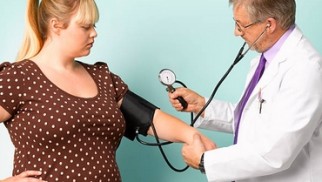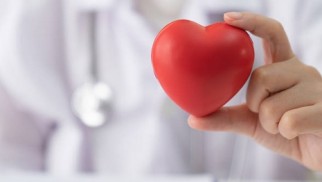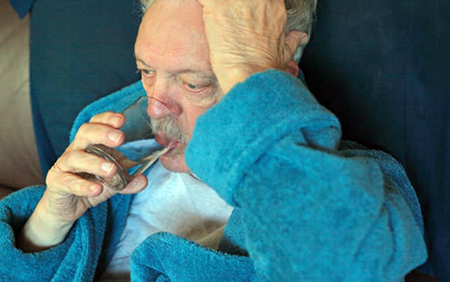How to know if you have high blood pressure and how to treat it?


Arterial hypertension (AH) or high blood pressure, is a persistent elevation in blood tension from 140 and above systolic and from 90 and above diastolic.
In the 21st century, high blood tension is the most frequently diagnosed cardiovascular disease and one of the main causes of disability and death.
Causes of illness
The main reasons for elevated arterial tension are divided into two groups:
- Symptomatic hypertension, i.e. manifested as a result of diseases of various organs and systems (for example, with pathology of the kidneys or adrenal glands, hypothalamic syndrome);
- Primary hypertension that has arisen without obvious established causes (most often occurring).
Also, one of the reasons for a rise in blood tension may be the intake of certain groups of medicines, for example: NSAIDs, oral contraceptives, steroid hormones.
It has been scientifically proven that whatever the reason for raised blood tension, the main tactic of therapy is to lower and stabilize it at the norm values to prevent life-threatening complications.
Symptoms of raised blood tension

The possible symptoms are headaches, dizziness, nausea, heart ache, palpitations, and rapid fatigue. However, despite high values when measuring pressure, there may be no complaints. This is why hypertension is often compared to a silent killer, as its health effects are often seen late in the disease. Even if a person with hypertension feels fine, the disease, if left untreated, affects almost all organs.
AH diagnosis
Diagnosis and further appointment of the therapy is impossible without measuring blood tension. Or this, first doctor measures blood pressure and then the patient self-monitors using a blood pressure meter.
The diagnosis is established by a physician in accordance with the modern classification and has 3 stages, 3 degrees and 4 risk groups and can be clarified only upon examination, clarification of the state of target organs (most often suffering from high tension) and history of related conditions (stroke, heart attack, retinal detachment, etc.).
Degrees of the disease
Blood pressure norm and deviations
Also, there is a separate condition called systolic hypertension. It is distinguished by a rise in systolic tension above 140 mm Hg while diastolic pressure remaining is below 90 mm Hg.
Treatment of elevated blood tension

First of all, the disease control requires the implementation of lifestyle changes and the selection of medicines to stabilize blood pressure.
Important! Lifestyle changes can improve the prognosis for the disease as much as perfectly chosen medicines.
Lifestyle change interventions include:
1. Quitting smoking. The life expectancy of a smoker is on average 10-13 years shorter than that of nonsmokers, with heart diseases and oncology (various types of cancer) becoming the main cause of death. It is also known that a smoked cigarette can cause an immediate rise in blood tension by 20-40 mm Hg.
2. Compliance with a diet. Eating a low-calorie diet with plenty of plant foods can help you lose weight. It is known that every 10 kg of excess weight raises blood tension by 10 mm Hg. Reducing table salt consumption to 4-5 grams per day has been proven to diminish the level of blood tension, since with minimization of salt consumption, the retention of excess fluid in the vascular bed also decreases.
3. Physical activity. In many studies, it has been proven that regular exercise helps to lower average blood pressure values. It is advised to engage in moderate aerobic exercise (walking, jogging, cycling, and swimming) for at least 30 minutes every day.
Drug therapy

Treatment with medicines is carried out in five main classes of medicines:
1. Diuretics (thiazide group - including hydrochlorothiazide and indapamide, loop group - in case of hypertension, only torsemide and potassium-sparing ones are registered for constant use) - lower the volume of circulating blood and thus the pressure;
2. Beta-blockers. Their effect is based on the slowing down of the heart rate and diminishing myocardial contractility;
3. Calcium channel blockers (for instance, Felodipine) are divided into two main groups both of which are suitable for the condition discussed. The main mechanism of action of dihydropyridine calcium antagonists is peripheral vasodilation, that is, expansion of peripheral vessels and thus a lowering in Systemic vascular resistance (SVR), and a lowering in blood pressure respectively; The non-dihydropyridine group lowers the heart rate by slowing down the conduction of the impulse between the atria and the ventricles of the heart.
4. ACE inhibitors. The effect of this group is due to affecting the complex mechanism of the conversion of enzymes that contribute to rising in the tone of the vascular wall and, as a result, with a lowering in this tone, vascular resistance also diminishes.
5. Angiotensin receptor blockers act according to a scheme of action of ACE inhibitors, only at a higher level of enzyme metabolism (therefore, they do not cause cough, but sometimes they are less effective).
Other medicines such as renin inhibitors, centrally acting medicines alpha-blockers, mineralocoticoid receptor inhibitors are now more often appointed as part of combined therapy and not alone.
These medicines can be prescribed alone or in different combinations at the discretion of a doctor.
Some medicines are more preferable for specific situations, based on the age, sex, clinical condition at the time of examination, and concomitant diseases. There are also guidelines for optimal, rational, and less studied medicine combinations to lower blood pressure.
Emergencies in raised arterial tension

Emergencies with a rise in blood pressure (a sharp deterioration in well-being: sudden shortness of breath up to choking, severe dizziness, impaired movement in the limbs or visual impairment) require emergency medical care and must be stopped by specialists who have these skills.
An isolated sharp rise in blood pressure, without signs of an emergency, most often develops against the background of a break or refusal from constant therapy, a lowering of the prescribed dose of medicines, or anxiety, does not require hospitalization and needs to be corrected by the attending physician.
In conclusion, I would like to note that the selection of blood pressure medicines is a very complex process, often lengthy, requiring a large amount of special knowledge, constant monitoring, periodic correction and should be carried out only by a doctor.
How to measure blood pressure correctly?

Basic rules for self-measurement of blood pressure:
- The measurement should be performed in a calm state in 5 minutes of rest after doing anything, i.e. walking, cooking, etc.;
- During measurement one should sit comfortably and motionless, leaning against the back of a chair and not talking;
- The first measurements within a few days can be carried out on both hands, and later on the arm, on which blood pressure is usually higher;
- The cuff must match the circumference of the upper arm, because the use of a cuff that is too narrow or short can lead to overestimation of the values, and too wide to underestimate them.
Post by: Samuel Wrangler, M.D., Montgomery, Alabama
(Updated at Apr 14 / 2024)
Plendil articles:
Some of the trademarks used in this Web Site appear for identification purposes only.
All orders are reviewed by a licensed physician and pharmacist before being dispensed and shipped.
The statements contained herein are not intended to diagnose, treat, cure or prevent disease. The statements are for informational purposes only and is it not meant to replace the services or recommendations of a physician or qualified health care practitioner. If you have questions about the drugs you are taking, check with your doctor, nurse, or pharmacist.